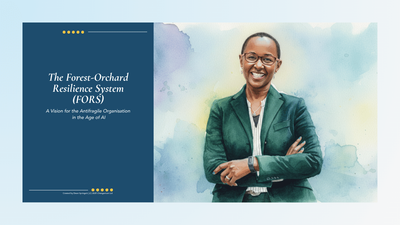Why Great Leaders Prune

And Don't Just Plant
Leaders love to launch new initiatives. The new logo, the bold kickoff, the energy in the room - that's the fun part.
But who wants to cut something that isn’t delivering? Few leaders want to be the "bad guy." As a result, companies become overgrown gardens.
Resources get trapped in zombie initiatives and vanity projects that drain energy but deliver little value. I’ve seen it firsthand: teams working late on projects the market no longer needs, all because no one had the courage to make the call. After all, so much has been invested. Saying "stop" is a tough decision, an admission of defeat, perhaps, but more importantly, a bold acknowledgement of reality.
But the act of cutting back isn’t failure. It’s courage.
In nature, pruning is what allows an orchard to bear fruit year after year. Remove the weak branches, and the strongest ones thrive. Businesses are no different. Yet we resist, held back by sunk costs, internal politics, or the fear of admitting a misstep.
This is where AI changes the equation.
With the right data structures, AI offers a real-time, unbiased view of what’s working and what’s not. Instead of navigating endless reports or political battles, you get data-driven clarity. It shows you exactly where to prune and where to double down.
This isn’t just about efficiency. It’s about building an antifragile organization that grows stronger under pressure because every remaining branch is nourished and productive. This is how you build resilience for breakout growth in an AI-driven economy.
I wrote last week about how termites build their magnificent "cathedrals." They operate on simple, decentralized rules, allowing them to adapt and reinforce their structure continuously. No single termite is in charge, yet the system thrives. We need to build organizations with that same embedded intelligence.
My upcoming Executive Briefing explores exactly how these new organisational structures are enabled through these AI-powered feedback loops.
For now, a question to consider:
Where in your business would one courageous cut today unlock tomorrow’s growth?
Subscribe to the FORS Report
Be the first to know - subscribe today





Member discussion